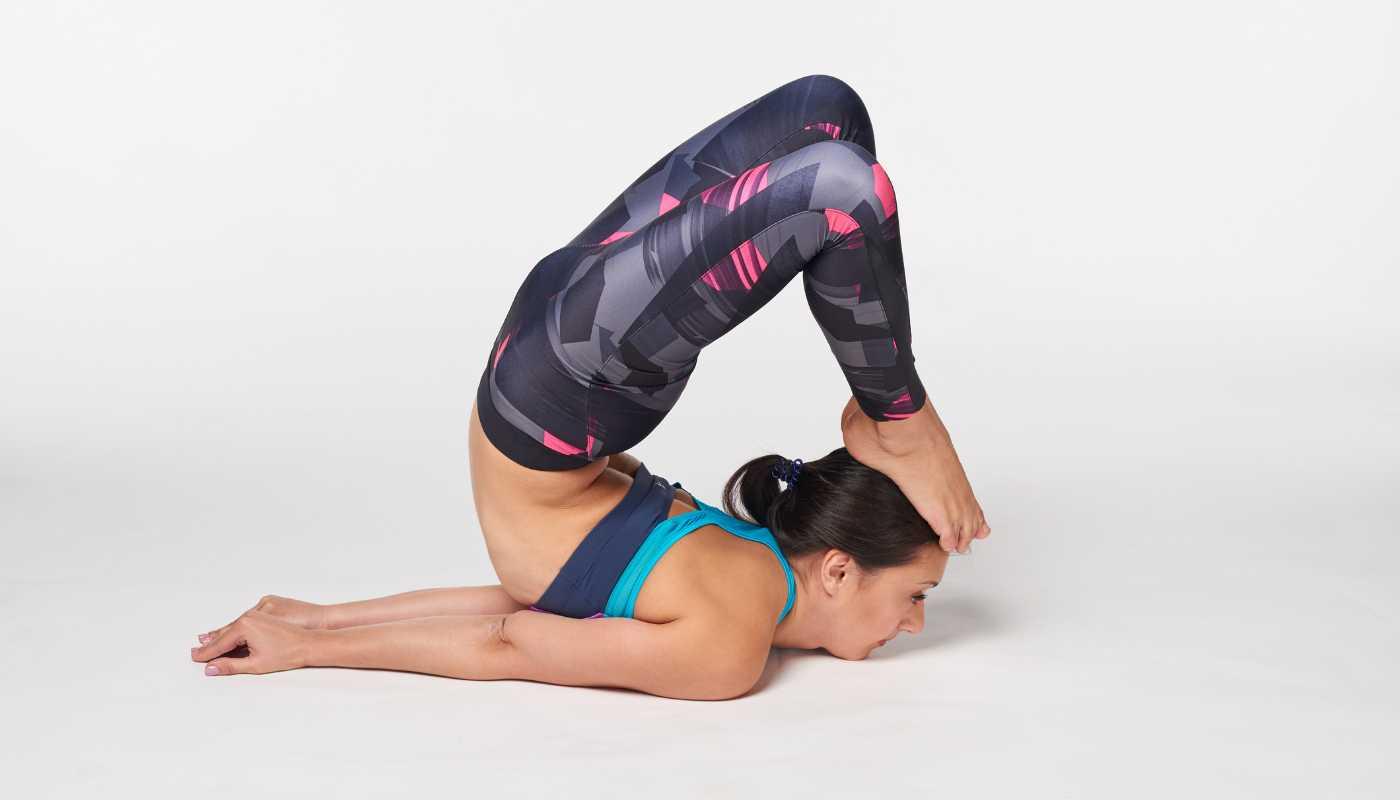Unlocking Vitality: Exploring the Full Locust Pose (Poorna Shalabhasana)
Every pose in the extensive repertoire of yoga asanas is a doorway to mental and physical health. Of them, Poorna Shalabhasana, or Full Locust Pose, is particularly noteworthy as a dynamic pose that energizes the body and mind by engaging and strengthening many muscle groups. This position, which derives from the Sanskrit terms “Poorna,” which means “full” or “complete,” and “Shalabha,” which means “grasshopper” or “locust,” captures the beauty and fluidity of its namesake insect. Let’s explore the instructions, advantages, and safety measures for this restorative pose.
Steps to Practice Full Locust Pose (Poorna Shalabhasana):
- Preparation: First, prepare yourself by lying flat on your stomach and placing your arms beside your body with your hands facing downward. To center yourself, take a few deep breaths and relax your entire body.
- Engage Core Muscles: Pull your navel towards your spine when inhaling by activating your core muscles. This helps to stabilize your pelvis and lower back.
- Lift Legs: Keeping both legs straight and engaged, slowly raise them both off the ground at the same time during the subsequent breath. Pay attention to stretching your legs and extending your toes towards the rear of the space.
- Lift Chest: Using the strength of your back muscles, simultaneously raise your chest off the ground. To keep your alignment and avoid straining your neck, keep your gaze forward.
- Extend Arms: If it’s comfortable, raise your arms so they’re parallel to the floor and extend forward of your body. This extension provides a balancing aspect and improves the stretch throughout your entire body.
- Hold and Breathe: Hold this position while continuing to breathe steadily for 15 to 30 seconds. At the same time that your back, legs, and core muscles are activating, work on developing a feeling of lightness and buoyancy.
- Release: Breathe out slowly while carefully lowering your legs and torso back to the floor. Before you repeat the posture or move on to the next asana, take time to rest in the prone position.
Benefits of full locust pose (Poorna Shalabhasana):
- Strengthens Back Muscles: Poorna Shalabhasana works the erector spine, one of the muscles that runs parallel to the spine, and aids in posture correction and the relief of back discomfort.
- Tone Abdominal Muscles: By using the core muscles in this pose, the abdominal muscles are strengthened, which improves the torso’s stability and balance.
- Improves Flexibility: Consistently performing this pose lengthens the range of motion and mobility in the shoulders, hips, and spine.
- Stimulates Digestion: Poorna Shalabhasana’s compression of the belly improves digestion by stimulating the digestive organs and reducing bloating and indigestion symptoms.
- Elevates Mood: This pose’s muscular effort and deep breathing combine to release endorphins, which uplift the mind and reduce tension and anxiety.
Precautions and Contraindications of full locust pose (Poorna Shalabhasana):
- Avoid if Pregnant: Because Poorna Shalabhasana includes resting on the tummy and putting pressure on the abdomen, women should not perform this pose when pregnant.
- Recent Injury: Because this pose can aggravate pre-existing conditions, people who have recently sustained back or neck injuries should proceed cautiously or not at all.
- High Blood Pressure: This position can raise blood pressure, thus people with high blood pressure should avoid holding their breath or exerting too much strain while doing it.
- Modifications: If the posture causes you any pain or strain, think about lowering your chest towards the floor or raising just one leg at a time.
By including Full Locust Pose in your yoga practice, you can open up a reservoir of vitality that will support mental clarity, emotional balance, and physical strength. Approach it mindfully, respecting your body’s limitations, and enjoy the journey of self-discovery and transformation on the mat, just like you would with any other yoga pose.
Read More: Yoga in Rishikesh
Learn to know more About Yoga Poses So You Can visit best yoga school and join 200 hour yoga teacher training in rishikesh and yin yoga teacher training in india




